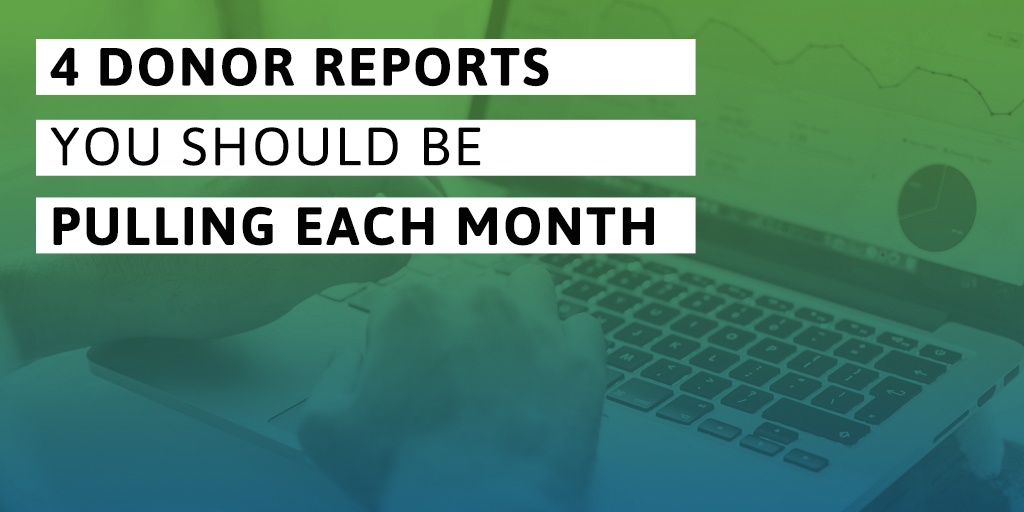Pulling reports not only gives you insights into your donor relationships and financial situations, but it also lets you know what’s working and what’s failing in your efforts to attract and convert donors. That’s why reports are so valuable; think of them as the blueprints to your donor base.
But we all know that there are an endless of amount of reports that you can pull and it’s quite easy to get distracted or even lost in all of the data. So to keep that from happening, we want to outline the basics and a few extras.
We think it’s important to stay on top of your donor efforts by pulling the number of donors on file, number of donations received and total amount donated that month. Those are the basics, but what about the uncovered data that you haven’t been analyzing? We’d like to bet that you have even more data in your back pocket that you’ve never pored over, data that could in fact be the missing puzzle piece to your greater donor story.
Here are just a few of the customized donor reports you should be pulling:
- Credit card expirations. Now, chances are you already have a process in place to track these, but how effective is it? We want to reiterate that it’s so important to make an effort to stay on top of expiring credit cards. By pulling a weekly report, you can easily see which donors are about to expire and which expirations are coming up.
Most people, when they receive a new credit card or debt card, aren’t able to think through all of the places where that card might be registered and might currently be in use. If you have donors who are on an automatic monthly giving track, then it’s likely that the thought crosses their mind even less. But you can’t afford to lose those people. Make sure your system is set up to send automated messages to these donors either via email or text about their card expiring. In the communications, make it easy for them to update their profile by including a link for them to follow where they can change their information.
- Frequency. For each different campaign that you run or program that you ask people to donate toward, you likely have a different code. So how do the codes stand up to each other? Is there one area where people give more to than others? Does it fluctuate at different times of the year? Knowing these facts about your donors’ giving patterns can greatly inform your appeals as you figure out the best programs to promote and exactly when you should promote them.
- Pledge and fulfillment. Pulling these kind of reports not only shows you who has followed through and who hasn’t, but it also gives you the chance to see if you even have the kind of donors that respond to pledge asks. For instance, if you have a large response to a pledge push, but a very low follow-through rate, then going the pledge route might not actually be the right avenue. Consider changing your tactics to reach this particular audience in a similar manner but that guarantees instant follow-up.
- Individual donor analysis. Get valuable details about individual donors and their performance within your donor base as compared to other donors. You may find a group of people that has great potential but aren’t responding well. By viewing their individual data, you might be able to pinpoint the problem areas and figure out if changing the frequency of communications, type of communications or kind of follow up can help increase and/or stabilize their donor behavior.
Here’s the best part about pulling reports: With Donor.com’s donor management software, you don’t have to worry about organizing data by hand or sorting through massive Excel spreadsheets to get the reports you need. Donor.com does it all for you. All you need to do is set the guidelines for what data it will pull, hit the button, and voila! You get your report. You can even save that report to continue pulling updated numbers week after week, month after month, year after year.


-1.jpg)







